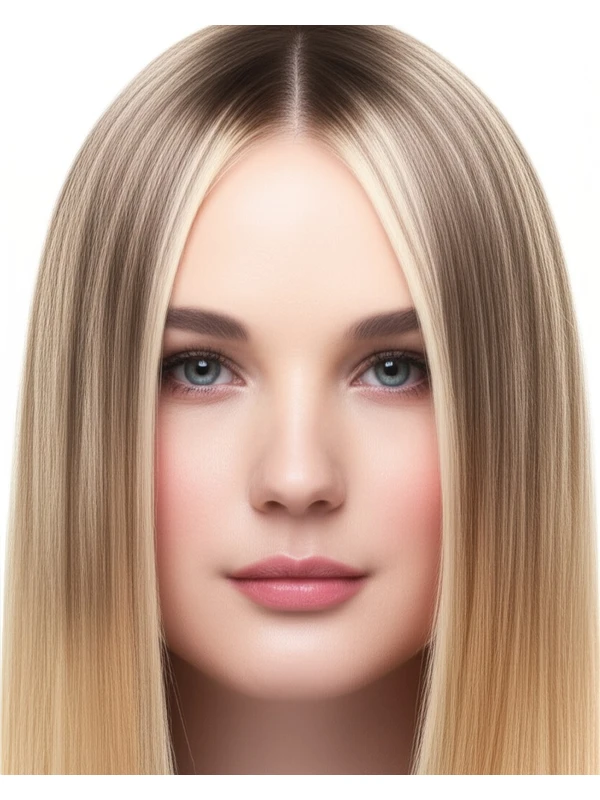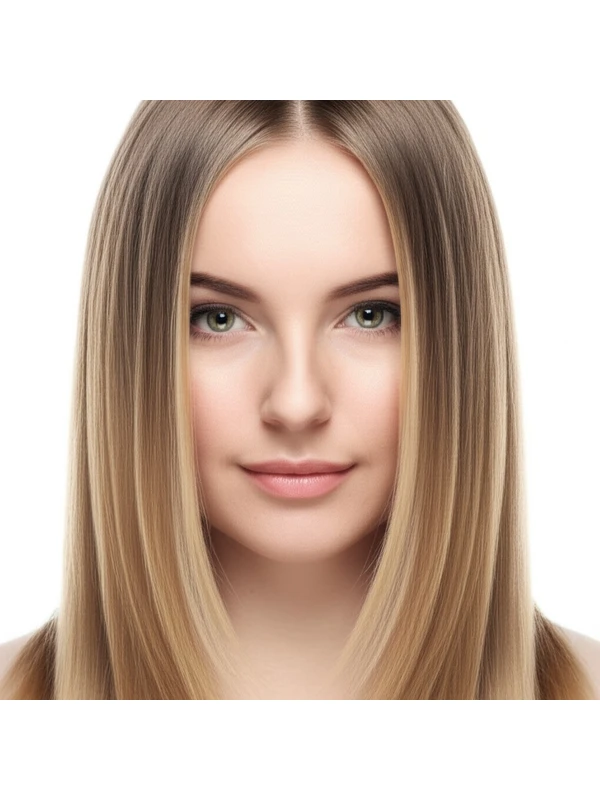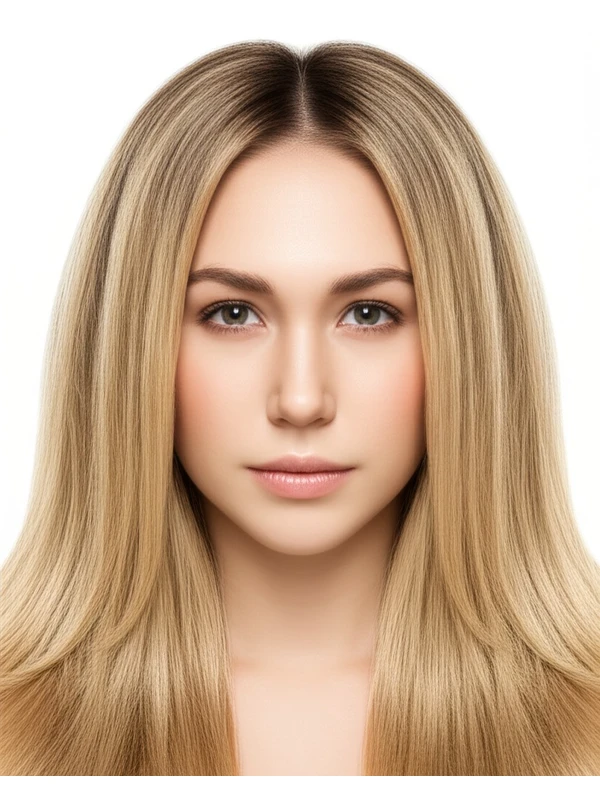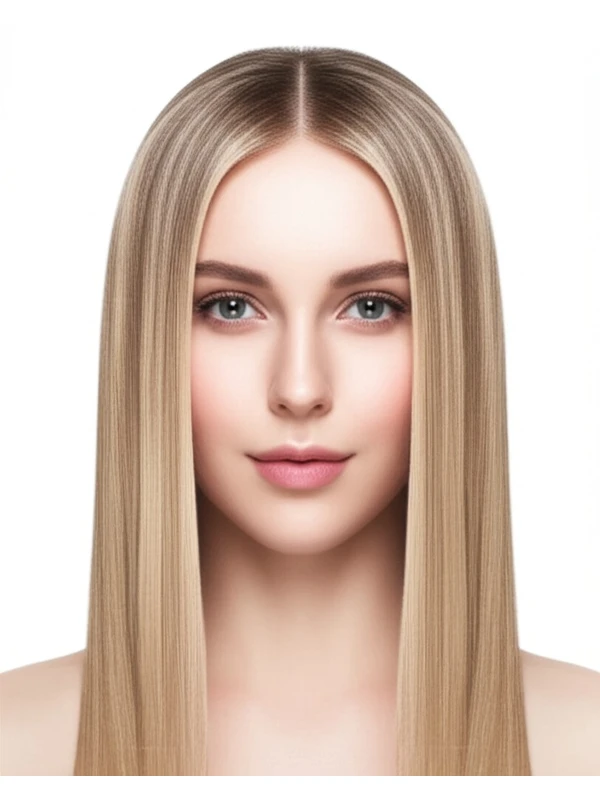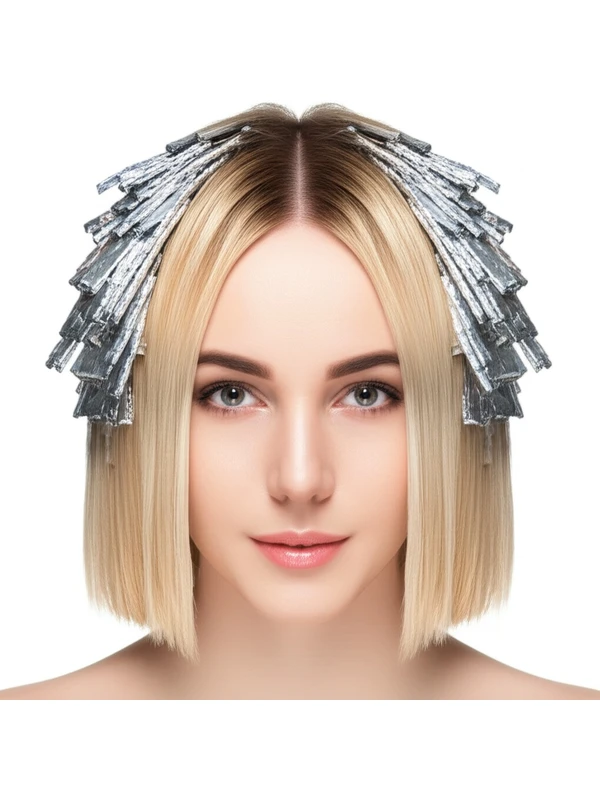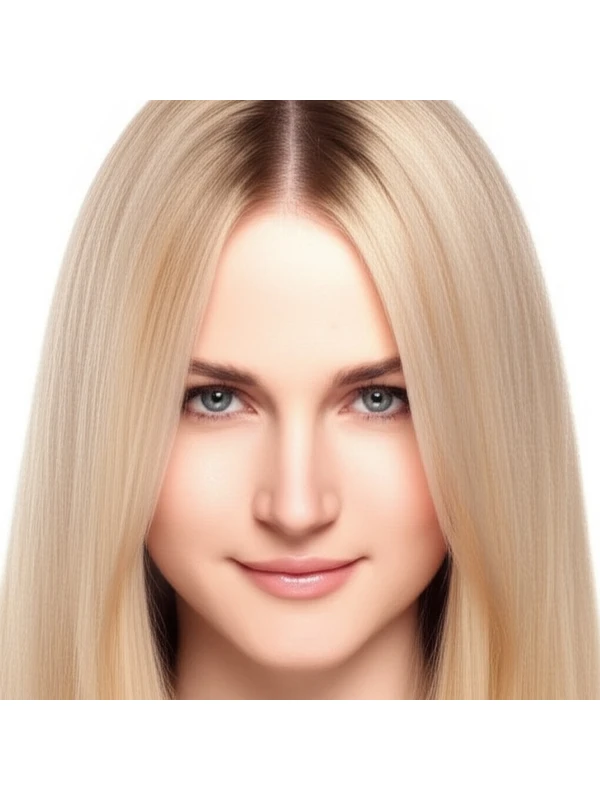#Sunkissed Highlights: Your Guide to a Natural Glow
Sunkissed highlights are a popular hair color trend that aims for a soft, blended look mimicking the natural lightening effect of sun exposure. It’s all about creating dimension and warmth without harsh lines or obvious sections. Here's everything you need to know.
#1. What Are Sunkissed Highlights? How They Work
Sunkissed highlights differ from traditional highlighting in their application and overall aesthetic. Instead of precise, evenly spaced foils, they involve a more freehand approach using painting techniques.
- Tools: Primarily brushes (various sizes for different areas), often with no foil used at all – or minimal, strategically placed foil to control the lift.
- Placement: Highlights are typically concentrated around the face (face-framing) and the surface of the hair, creating a halo effect. The stylist will assess your natural hair color and desired outcome to determine specific placement zones—the crown, sides, front hairline – all contribute to the overall look.
- Timing: Processing time depends on your starting level (natural hair color), desired lightness, and developer strength used by the stylist. It’s generally shorter than traditional foil highlights because the goal isn't full saturation of every strand but a softer, more diffused effect. The stylist will monitor closely to avoid brassiness or over-processing.
- The Process: A lightener is applied freehand, often in sweeping motions. Some sections might be wrapped in foil for controlled lift; others are left open to the air for a blended result.
#2. Best Use Cases: What Sunkissed Highlights Achieve
Sunkissed highlights offer versatility beyond just lightening hair. They’re fantastic for achieving several goals:
- Dimension: Adds depth and movement, preventing flat, one-dimensional color.
- Root Blur: The soft application creates a gradual transition from your natural root color, minimizing the need for frequent touch-ups.
- Face Framing: Brightens the face by strategically placing highlights around facial features.
- Subtle Coverage: Can subtly disguise grays or blend away darker roots without a dramatic contrast.
- Warmth & Glow: Adds a healthy, sun-kissed appearance, especially flattering in warmer months.
#3. Who Are Sunkissed Highlights For?
This technique is adaptable but works best for certain individuals and hair characteristics:
- Natural Color Level: Typically suited for levels 2–6 (light brown to dark blonde). Those with darker starting colors may require multiple sessions or a combination of techniques.
- Undertone: Generally complements warm undertones (golden, yellow, copper) but can be adapted for cool undertones (ashy, pink, blue) by adjusting the toner used after lightening.
- Hair Type/Texture: Works well on all hair types: straight, wavy, curly, and coily. The application method adapts to each texture – more strategic placement is needed with tighter curls to ensure even light distribution.
- Straight Hair: Highlights show up clearly and are easy to distribute evenly.
- Wavy Hair: Highlights enhance the natural wave pattern.
- Curly/Coily Hair: Requires a skilled stylist who understands curl patterns for balanced, dimensional results; highlights can be strategically placed to avoid disrupting curl definition.
- Hair Density: Suitable for both fine and thick hair. With finer hair, less product is used to prevent damage. Thicker hair may require more strategic placement to ensure even distribution of lightness.
- Hair Length: Works well on all lengths – short bobs, long layers, everything in between! The amount of highlighting will vary depending on the length and desired effect.
- Lifestyle: Ideal for those who want a low-maintenance color with a natural look and don’t desire frequent salon visits.
#4. Sunkissed Highlights vs. Similar Techniques
Understanding the differences is key to choosing the right technique:
- Balayage: Similar freehand application, but balayage often focuses on more dramatic contrast and bolder placement than sunkissed highlights which are softer.
- Foilyage: Combines balayage painting with foil wrapping for increased lift and control. Sunkissed highlights typically use less foiling or no foiling at all.
- Traditional Highlights: Uses precisely placed foils to create defined, even sections of lightness – a stark contrast to the blended look of sunkissed highlights.
- Root Smudge/Shadow Root: These are additions that can be incorporated with sunkissed highlights. A root smudge blends the line between your natural roots and the highlighted areas for an even softer grow-out; a shadow root creates a darker base, enhancing the brightness of the highlights.
#5. Maintenance & Longevity: Planning Your Schedule & Budget
- Salon Timing: Typically every 3–6 months, depending on hair growth and desired level of lightness.
- Toner/Gloss Refresh: A toner or gloss is usually applied after highlighting to neutralize any unwanted tones (like brassiness) and add shine. These may need refreshing every few weeks – your stylist can advise.
- Grow-Out Behavior: The blended application results in a softer grow-out, minimizing harsh lines as the roots reappear. This extends time between salon visits.
- Budget/Time Planning: Sunkissed highlights are generally less expensive than traditional highlighting due to shorter processing times and potentially fewer products used. However, cost varies based on hair length, density, and stylist experience. Expect to spend 2-4 hours in the salon.
#6. At-Home Care Tips for Vibrant Highlights
- Wash Cadence: Reduce washing frequency (2–3 times per week) to preserve color vibrancy.
- Heat Protection: Always use a heat protectant spray before using styling tools (blow dryers, straighteners, curling irons). Heat accelerates color fading.
- Color-Safe Care: Use shampoos and conditioners specifically formulated for color-treated hair. These are gentler and help prevent color loss. Purple shampoo can neutralize brassy tones – use sparingly as directed on the bottle!
- Deep Conditioning: Incorporate a deep conditioning treatment once or twice a month to keep hair hydrated and healthy, which will also prolong your highlights’ vibrancy.
#7. Pros & Cons of Sunkissed Highlights
Pros:
- Low maintenance
- Natural-looking results
- Soft grow-out
- Adds dimension and warmth
- Versatile for various hair types/lengths
- Less damaging than traditional highlights (potentially)
Cons:
- May not achieve drastic color changes.
- Requires a skilled stylist for optimal results, especially with curly or coily hair.
- Can be challenging to achieve on very dark starting colors without multiple sessions.
#8. Salon Consultation Script: What Your Stylist Will Ask
Your consultation is crucial! Be prepared to discuss your goals and expectations. Here are some questions you can expect (and prompts for you to consider):
- "What's your current hair color routine?"
- “What kind of look are you hoping to achieve?” (Show pictures!)
- "How much time/money are you willing to invest in maintenance?"
- "Are there any areas you want more or less lightness?"
- "Do you have any concerns about damage or sensitivity?"
- "Have you had your hair highlighted before? If so, what was the experience like?”
#9. FAQs About Sunkissed Highlights
- Can I do sunkissed highlights myself at home? While DIY kits exist, it’s best left to a professional for optimal results and to minimize damage. The freehand technique requires skill and precision.
- How long will the color last? With proper care, the color can last 3-6 months before needing a refresh. Toner may need more frequent touch-ups (every few weeks).
- Will sunkissed highlights damage my hair? Any lightening process has potential to cause some dryness or breakage. A skilled stylist will use gentle products and techniques to minimize this risk. Regular deep conditioning is important for maintaining hair health.
- Can I get sunkissed highlights if I have dark brown/black hair? Yes, but it may require multiple sessions or a combination of lightening techniques to achieve the desired lightness without compromising hair integrity.
- Are sunkissed highlights suitable for fine hair? Absolutely! The stylist will use less product and focus on strategic placement to avoid weighing down the hair.
- What’s the difference between a toner and gloss? Both are used to adjust tone, add shine, and seal the cuticle. Toners primarily change color; glosses mainly enhance shine and condition. They can often be combined!
- How do I prevent brassiness in my sunkissed highlights? Use purple shampoo/conditioner sparingly, avoid excessive heat styling, and consider a bonding treatment to protect hair from damage.
- Can I add extensions with sunkissed highlights? Yes, but it's important to inform your stylist beforehand so they can seamlessly blend the highlights with the extensions for a natural look.
